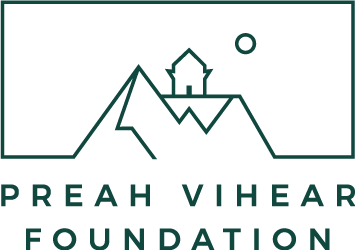The “Ghost Mountain” – the Killing Fields at Preah Vihear
With the kind permission of James Taing of the Preah Vihear Foundation, we would like to share the incredible story of the documentary“Ghost Mountain: The Second Killing Fields” with you here. You can also find more information about the film at www.pvfund.org (external website).
The forgotten tragedy of Ghost Mountain – The massacre at Preah Vihear Temple Mount
After the fall of the murderous Khmer Rouge regime in Cambodia in 1979, one of the worst chapters of the 20th century came to an end – and with it the genocide on the so-called “Killing Fields”, which claimed the lives of around two million people. But the story of the survivors does not end there. A shocking event – far less well known – took place at a remote place called Ghost Mountain, also known as the temple mountain Preah Vihear. It tells of another catastrophe, this time on the Thai-Cambodian border.
Escape from the nightmare
Many Cambodians, including Bunseng Taing, fled Cambodia for Thailand after the invasion of Vietnamese troops. The hope: protection, food, a new start. In temporary refugee camps on the border, guarded and controlled by Thai authorities, some families briefly experienced safety again. But this peace was deceptive.
Political calculation and inhumane decision
The Thai government, overwhelmed by the mass of refugees and suspicious of possible Vietnamese agents, decided to commit an act of unprecedented cruelty. In June 1979, tens of thousands of refugees were loaded onto buses under false pretenses – supposedly for resettlement in safe camps. In reality, they were taken to the border area near Preah Vihear and forcibly led up the mountain. From there, they were forced to “return” to Cambodia via steep, mine-infested cliffs. It was not a return to a safe life – as they had been led to believe. It was a planned death trap.
The descent into hell
Without water, without food, under pressure from armed soldiers and the omnipresent fear of landmines, the forced march began. Old people tumbled down cliffs, children were stopped to their mothers to rappel down, many were torn to pieces by mines. The few survivors reported bloodied corpses, scattered limbs, screams in the night – sounds that gave the place the name “Ghost Mountain”. According to survivors, around 13,000 of the approximately 42,000 refugees lost their lives on this route.
One survivor recounts
Bunseng Taing, who survived the Killing Fields himself, describes what he experienced on Ghost Mountain as even worse than his time in the Khmer Rouge labor camps. Together with his family, he struggled for three months through the jungles of Cambodia back to Thailand, where he was finally legally accepted into a refugee camp and later resettled in the USA.
Years later, by chance, he found the man who had once rescued him – a moving moment that formed the starting point for the documentary reappraisal of this little-known tragedy. For Bunseng, it was not only an act of gratitude, but also the preservation of a suppressed chapter of history.
The silence of the world public
The international reaction to the massacre at Preah Vihear was sparse. A few Western aid workers tried to raise awareness – but they were forcibly removed from the camps by Thai soldiers. Even when later evidence of the cruelty leaked out, there was no outcry. Most survivors remained silent out of shame, fear or because no one listened to them. In Cambodia itself, many young people today know nothing about the event.
The lessons of Ghost Mountain
Ghost Mountain stands as a warning symbol for the failure of international protection mechanisms, for political indifference and for the immense suffering of people caught in the middle. But it also shows what hope and humanity can achieve: People like Bunseng Taing, who live on despite everything, tell their story and, through their art, open a window to a past that must never be forgotten.


